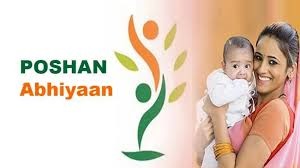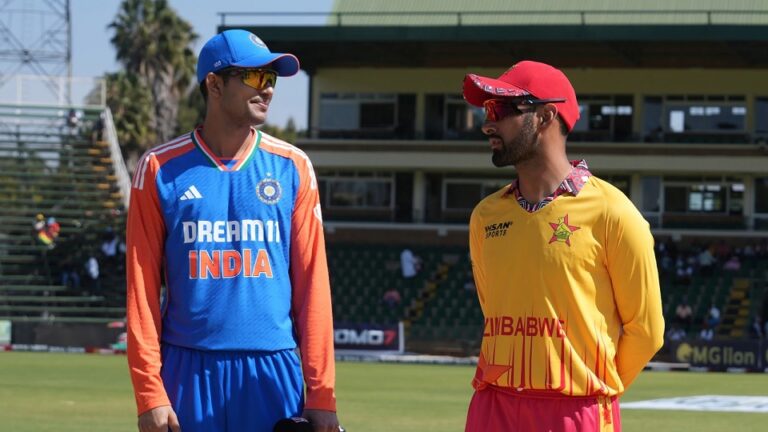
poshan abhiyaan
India has long struggled with malnutrition, especially among children and women. To address this, the Indian government launched the Poshan Abhiyaan, also known as the National Nutrition Mission, in 2018. This comprehensive scheme focuses on improving nutrition standards across the nation, aiming to reduce malnutrition levels in a phased manner. By utilizing technology, community mobilization, and focused intervention, Poshan Abhiyaan aspires to achieve a malnutrition-free India.
This article will delve into the objectives, components, achievements, challenges, and the future of Poshan Abhiyaan in the context of India’s ongoing battle against malnutrition.
Table of Contents
Introduction to Poshan Abhiyaan: Poshan Abhiyaan
Poshan Abhiyaan, initiated by the Government of India under the Ministry of Women and Child Development, is a multi-ministerial convergence mission to eradicate malnutrition in a time-bound manner. “Poshan” means “nutrition,” and the program aims to improve nutritional outcomes for children, pregnant women, and lactating mothers. The mission was launched on March 8, 2018, by Prime Minister Narendra Modi in Jhunjhunu, Rajasthan, and aims to achieve its ambitious goals through a mix of technology, community-level interventions, and policy-driven strategies.
Malnutrition in India has been a persistent issue, affecting millions. According to UNICEF, India has one of the highest rates of child malnutrition, with nearly half of all children under five experiencing stunted growth or wasting. By targeting malnutrition, Poshan Abhiyaan addresses not just a health concern but a socio-economic one, as malnutrition can impact cognitive development, education outcomes, and future economic productivity.
Why was Poshan Abhiyaan Launched?
The roots of Poshan Abhiyaan lie in the recognition that malnutrition remains one of the most significant public health challenges in India. The program was launched to combat malnutrition by addressing its root causes, which include poor access to nutrition, lack of education about nutritional requirements, poverty, and inadequate healthcare facilities.
Objectives of Poshan Abhiyaan
The mission sets clear and measurable objectives to ensure sustainable and impactful changes in the nutritional status of India’s population. The primary objectives include:
Reducing Malnutrition in Children
One of the primary goals of Poshan Abhiyaan is to reduce stunting, wasting, and underweight among children. The mission aims to reduce stunting among children under five years by 2% annually, wasting by 2%, and underweight prevalence by 2%. The mission also aims to achieve a 3% reduction per year in anemia among children and women.
Improving Maternal Nutrition
Poshan Abhiyaan targets improved nutritional outcomes for pregnant and lactating mothers. Many women in India face malnutrition even before they conceive, which often results in low-birth-weight babies and subsequent health issues. By focusing on maternal nutrition, Poshan Abhiyaan intends to ensure healthier pregnancies and better outcomes for infants.
Promoting Adolescent Health and Nutrition
The mission recognizes that malnutrition needs to be tackled before a woman becomes pregnant. Thus, it includes adolescents as a key demographic, aiming to improve their health, educate them on nutrition, and ensure they have access to proper food. This approach supports a healthier generation and breaks the cycle of malnutrition.
Key Components and Strategies of the Mission
Poshan Abhiyaan incorporates several strategies and tools to accomplish its objectives effectively. It leverages technology, community involvement, and the collaboration of multiple ministries and departments.
Convergence of Multiple Ministries and Departments
Poshan Abhiyaan’s success depends on the coordination of various ministries, including Health, Education, Rural Development, and others. This multi-departmental approach ensures that resources and expertise are utilized efficiently, allowing the mission to address malnutrition comprehensively.
Community Mobilization and Jan Andolan (People’s Movement)
One of the most innovative aspects of Poshan Abhiyaan is its Jan Andolan strategy, where the government encourages communities to participate actively in fighting malnutrition. Through this movement, the government organizes events and activities that involve citizens, making them aware of the importance of nutrition, sanitation, and hygiene.
Use of Technology for Monitoring and Evaluation
Poshan Abhiyaan has incorporated digital tools to monitor the implementation of the mission. The government launched a mobile application to track data related to malnutrition, health, and nutrition services. This app allows real-time monitoring and data analysis, enabling timely interventions.
Behavior Change Communication (BCC)
A major focus of the mission is to bring about behavioral change in dietary practices and hygiene habits among individuals. Poshan Abhiyaan promotes awareness campaigns that educate people on the importance of nutrition, the harmful effects of junk food, and the necessity of sanitation and hygiene.
Achievements of Poshan Abhiyaan So Far
Since its inception, Poshan Abhiyaan has made considerable strides toward achieving its goals. The mission has positively impacted millions of children, women, and families across India, contributing to a reduction in malnutrition rates.
Increased Awareness and Participation
Thanks to its Jan Andolan approach, the mission has reached households across the country, spreading awareness about nutrition and hygiene. This grassroots approach has mobilized local communities, empowering citizens to take responsibility for their health.
Significant Improvement in Data Collection and Monitoring
The Poshan Tracker, an app-based platform, has helped Anganwadi workers monitor and report the health metrics of children and women more accurately. This data helps the government identify high-risk areas and populations that need focused intervention.
Enhanced Inter-ministerial Coordination
The convergence approach adopted by Poshan Abhiyaan has facilitated collaboration among multiple ministries, breaking down silos that previously hindered progress in tackling malnutrition. By pooling resources, the mission can address both direct and indirect causes of malnutrition more effectively.
Challenges and Roadblocks
Despite its achievements, Poshan Abhiyaan faces several challenges that could impede its success.
Limited Resources and Funding
While the government has allocated significant funds for the mission, resource limitations in certain states impact implementation. Some regions may require additional resources to meet the growing demands of their populations, which could lead to uneven progress across the country.
Lack of Trained Personnel
A key aspect of the mission is the role of Anganwadi workers, who provide crucial frontline support. However, many Anganwadi workers face challenges such as lack of training, limited resources, and a heavy workload, making it difficult for them to deliver services effectively.
Cultural and Social Barriers
In many communities, traditional beliefs and dietary customs may hinder the adoption of nutritional best practices. Additionally, issues such as gender discrimination and poverty further complicate efforts to improve nutrition in certain areas.
Inadequate Infrastructure and Supply Chain Issues
In remote areas, poor infrastructure and unreliable supply chains hinder the delivery of nutrition supplements and healthcare services. This logistical challenge affects the distribution of food and medical supplies, reducing the mission’s effectiveness.
Future Prospects of Poshan Abhiyaan
The future of Poshan Abhiyaan holds promise as the mission continues to evolve and expand its reach. To ensure the mission’s sustainability and further reduce malnutrition, the following steps could be taken:
Strengthening Infrastructure and Supply Chains
Improving road connectivity and creating robust supply chains in rural and remote areas would make healthcare and nutritional resources more accessible. This would help bridge the gap between urban and rural nutrition standards.
Capacity Building and Training for Anganwadi Workers
Investing in the training and capacity building of Anganwadi workers would significantly improve service delivery. With better training, these frontline workers can contribute more effectively to Poshan Abhiyaan’s objectives.
Promoting Public-Private Partnerships
Collaboration with private entities can enhance the mission’s reach and resources. By involving private organizations, Poshan Abhiyaan could access additional funding, innovative ideas, and technology solutions to overcome resource limitations.
Continuous Monitoring and Data-Driven Interventions
Real-time data tracking and analysis should remain a core focus. By regularly evaluating the progress and adjusting strategies based on data, Poshan Abhiyaan can address emerging challenges more effectively.
Conclusion: Towards a Healthier India
Poshan Abhiyaan is a transformative initiative that has set India on the path to becoming a malnutrition-free nation. Through its multifaceted approach, the mission has not only raised awareness but also empowered communities to take action. While challenges remain, Poshan Abhiyaan’s focus on technology, convergence, and community participation makes it a powerful tool in India’s fight against malnutrition.
With continued commitment, innovation, and collaboration, Poshan Abhiyaan has the potential to create a healthier and more prosperous India. The mission’s impact on future generations could be profound, breaking the cycle of malnutrition and poverty and enabling millions to lead healthier, more productive lives.



